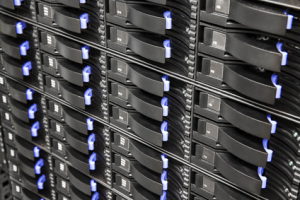The full value of IBM Spectrum Protect can be provided through a Remote Management MSP specializing in Data Backup and Recovery.
IBM data protection solutions, featuring IBM Spectrum Protect™, enable advanced data backup and data recovery for virtual, physical, cloud and software defined environments – as well as core applications and remote facilities. IBM Spectrum Protect, formerly Tivoli Storage Manager family, is a member of the IBM Spectrum Storage™ family. These solutions offer value to any size organization with any recovery objective.
 New era cloud environments and applications such as analytics, mobile and social are driving huge growth in data volumes, making data the new natural resource. The increased complexity and the general evolution of what we now recognize as mission-critical data. These increasingly complex data types are rendering your old data backup and recovery plan obsolete. There should be no hesitation to prioritize the review and update of the corporate data disaster recovery plan.
New era cloud environments and applications such as analytics, mobile and social are driving huge growth in data volumes, making data the new natural resource. The increased complexity and the general evolution of what we now recognize as mission-critical data. These increasingly complex data types are rendering your old data backup and recovery plan obsolete. There should be no hesitation to prioritize the review and update of the corporate data disaster recovery plan.
Central backup procedures must be reviewed for proper governance and assurance of data resiliency. This data is now mission critical and must be treated as legacy business data, just like Accounting, Payroll, etc. This provides an additional burden on the IT staff in understanding the implications of developing backup procedures for these diverse data types.
A remote data backup and recovery model using IBM Spectrum Protect, such as that from Salvus Data, is a direction that should be considered to manage the new data types and complexity. Salvus Data develops and remotely executes the business critical backup strategy. With the Salvus Cloud Management Data Backup/Recovery solution, the client has the most up to date data backup processes without the overhead and time to maintain it. In addition, the client has:
- access to a team that spends their time doing backups 7×24 365 days a year.
- the option to have Data Backup/Recovery efforts in-house or at the location of their choice.
- an American partner who understands business needs within the United States.
The Salvus Data Consultants centrally monitors and manages the backup environments more cost-effectively and with increased service levels. For more information contact Salvus Data at 903-201-7233.


